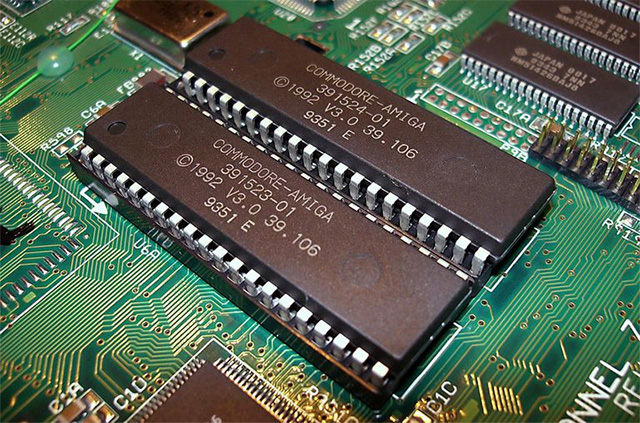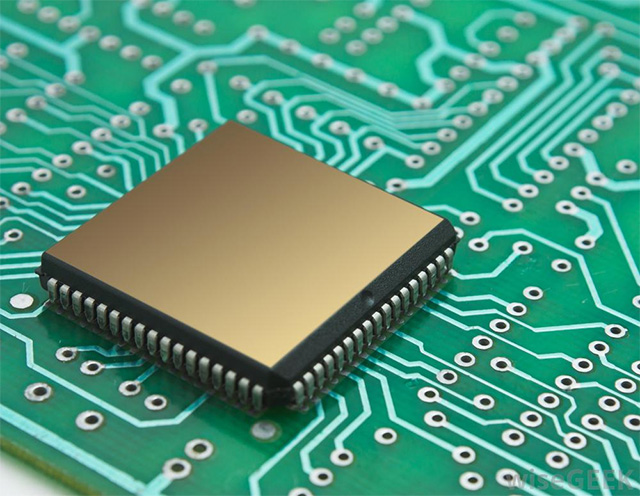How does ROM memory work?
ROM (Read-only memory) read only memory Integrated circuits are programmed with specific data from the time of production.ROM is used not only in computers, but in most electronic devices, other information technology, and this memory is sometimes considered as a firmware.
In this article, we will learn about the different types of ROMs and how they work specifically.First, let's distinguish the types of ROMs that are appearing on the market today.
Types of ROM
There are five basic ROM types:
- ROM
- PROM
- EPROM
- EEPROM
- Flash memory

Of course each type of ROM will bring in its own unique characteristics that help them differentiate from the rest of the brothers, but in general, all types of ROMs must bring in the following two characteristics:
- Data stored in ROM is immutable.That means the data will not go away when the device is disconnected
- Data stored in ROM is irreversible.If you want to change the data stored in ROM, the user must perform certain operations.Go to this ROM point completely different from RAM.Data in RAM can always be changed very easily.That is why data is not lost after we disconnect the power to the ROM.
How the ROM works
Similar to RAM, the ROM contains a grid of interlaced columns and rows.However, where rows and columns intersect, while RAM uses transistors to turn on or turn off access to a capacitor at each intersection between the above rows and columns, the ROM uses one. diode to connect rows and columns when the value is 1 and vice versa when the value is 0.
A diode usually only allows current to flow in a single direction with a certain threshold, called a forward breakover.This concept helps determine how much electricity is needed before they pass through the diodes.For products made from silicon such as microprocessors and memory chips, the ideal backup relay voltage is about 0.6 volts.By taking advantage of the unique properties of a diode, the ROM can transmit an electrical current that exceeds the transition threshold to the appropriate columns through the selected rows, to form the connected cells. certain.If a diode is present in that cell, then in binary, the value is interpreted as "on" (value 1).If the value of the cell is 0 then there is no diode in the intersection points connecting columns and rows.Therefore, the current on the column is not transmitted to the row.
It can be seen that the way ROM works requires data to be programmed perfectly and completely from the moment it is manufactured.You cannot reprogram or rewrite a standard ROM memory.If in the process of creating a ROM memory, you make a mistake in programming or data needs to be updated, you will have to redo everything from the first step.That's why producing a prototype ROM chip is often a very time-consuming and risky process.But the benefits that ROM brings are always much bigger than the difficulties encountered in production.After the sample ROM is completed, the cost to produce other ROM models is also cheaper.ROM memory uses very little power, is extremely reliable and is an indispensable part of small electronic devices.They contain all the programs we need to use the device.
The small ROM chip in the singing fish toy is an example.The chip, about the size of your fingernails, carries long 30-second tracks and control codes to synchronize the engines in the box with music.
PROM
It can be seen that the production of small quantities of ROM is very costly both in time and cost.Therefore, the developers mainly developed a ROM type called programmable Read-only memory (or programmable Read-only memory) or PROM.Blank PROM chips are cheap and can be encoded by any programmer.

Structurally, PROM also includes a network of columns and rows just like on regular ROMs.The difference is that at each intersection of a column and row in the PROM there is a fuse connected.An electric current passed through a column will pass the fuse in the intersection point to a row, denoting the value 1. Since all cells have fuses, the initial (empty) state of the PROM chip is 1. To Change the value of a cell to 0, the programmer sends a certain current to that cell.Higher voltages break the connection between columns and rows by burning fuses.This process is called burning PROM.PROM can only be programmed once.They are also "more fragile" than ROM.A static current can also easily cause fuses in the PROM to burn, changing the value from 1 to 0. However, empty PROMs are reasonably priced and very useful for copying sample data for ROMs. before proceeding to the ROM production process which is already very expensive.
EPROM
Although the cost of producing each ROM chip is not too expensive, in general, on a large number, the production of ROM and PROM is a risky investment.Therefore, EPROM (Erasable Programmable Read-Only Memory) appears to solve this problem.EPROM chips can be rewritten many times.Removing EPROM requires a special tool, which emits a certain amount of ultraviolet (UV) rays.EPROM is programmed by how a programmer will supply voltage at the specified levels for EPROM, which depends on the type of EPROM used.

Similar to ROM and PROM, the network of columns and rows appears on EPROM.In an EPROM, there are two transistors in each cell at each intersection.Two transistors are separated by a thin layer of oxide.One of these transistors is called floating gate and the other is the control port.A single link from a floating gate to a row (wordline) is through the control gate, as long as the link is in place, in a cell with a value of 1. To change the value to 0 requires a process called "Fowler-Nordheim" tunnel.This 'tunnel' is used to change the position of electrons in the floating gate.An electric charge, usually 10-13 volts, will be delivered to floating ports.The current coming from the columns (bitlines) will enter the floating gate and retract to the ground.
This current makes the transistor at the floating gate act as an electronic gun.Excited electrons are pushed through and stuck on the other side of the thin oxide layer between the two transistors, and carry a negative charge.These negatively charged electrons act as a barrier between the control port and the floating port.A device called a sensor cell tracks the current flowing through the floating port.If the current through the gate is greater than 50% of the charge, it has a value of 1. If the charge passing through falls below the 50 percent threshold, the value will change to 0. All ports at intersections in an entirely open EPROM, give each cell a value of 1.
To rewrite EPROM, you must proceed to delete it first.To erase EPROM, you must use a power source strong enough to overcome negatively charged electrons that are blocking at floating ports.Ultraviolet light at frequency 253.7 is an ideal power source for deleting a standard EPROM, because at this particular frequency UV light will not be able to penetrate most plastics or glass, in when each EPROM chip has a quartz window above.Let EPROM delete process take place normally.The chip must be placed very close to the UV light source, within 1 or 2 inches.
EPROM deletion will not take place selectively, it will erase the entire EPROM.EPROM must be removed from the device and placed under the ultraviolet light of the EPROM eraser for a few minutes.If left too long EPROM may be completely erased.
EEPROM and Flash memory
Although the EPROM is a breakthrough compared to the re-usability PROM, one still needs a dedicated device as well as a lot of time and effort to remove or reinstall an EPROM.More importantly, we cannot perform selective deletion on EPROM but must delete all.Therefore, EEPROM (Electrically erasable programmable read-only memory) was born to solve this problem.Instead of using ultraviolet rays, you can return electrons in the intersection cells of the EEPROM to a normal state by applying a local electric field in each cell.This will only delete the selected cells in the EEPROM, then these cells can be rewritten.EEPROM changes 1 byte at a time.This makes them flexible but also slower. In fact, EEPROM chips are too slow to be used in products that require quick changes in data stored on memory.


Manufacturers solve this problem with Flash memory, a type of EEPROM that uses wires in the circuit to erase data by applying electrical fields to the entire chip or predefined parts in a chip called a block.Flash memory works much faster than traditional EEPROM because it writes data in blocks, usually 512 bytes, instead of 1 byte at a time.
See more:
- Instructions on how to upgrade RAM on computers and Laptops
- Instructions on how to create a RAM drive on Windows
- 8 easy ways to free RAM make the machine run faster
- First flash drive
 Learn about .io domain names
Learn about .io domain names![[Theory] What is Proxy Server?](https://tipsmake.com/data/thumbs_80x80/[theory]-what-is-proxy-server_thumbs_80x80_vZw7sm76V.jpg) [Theory] What is Proxy Server?
[Theory] What is Proxy Server? Learn about URLs
Learn about URLs 30 terms you should know when using the Internet
30 terms you should know when using the Internet What is Optical Audio Port? Should we use it?
What is Optical Audio Port? Should we use it? What is a codec? Why do I need codecs?
What is a codec? Why do I need codecs?